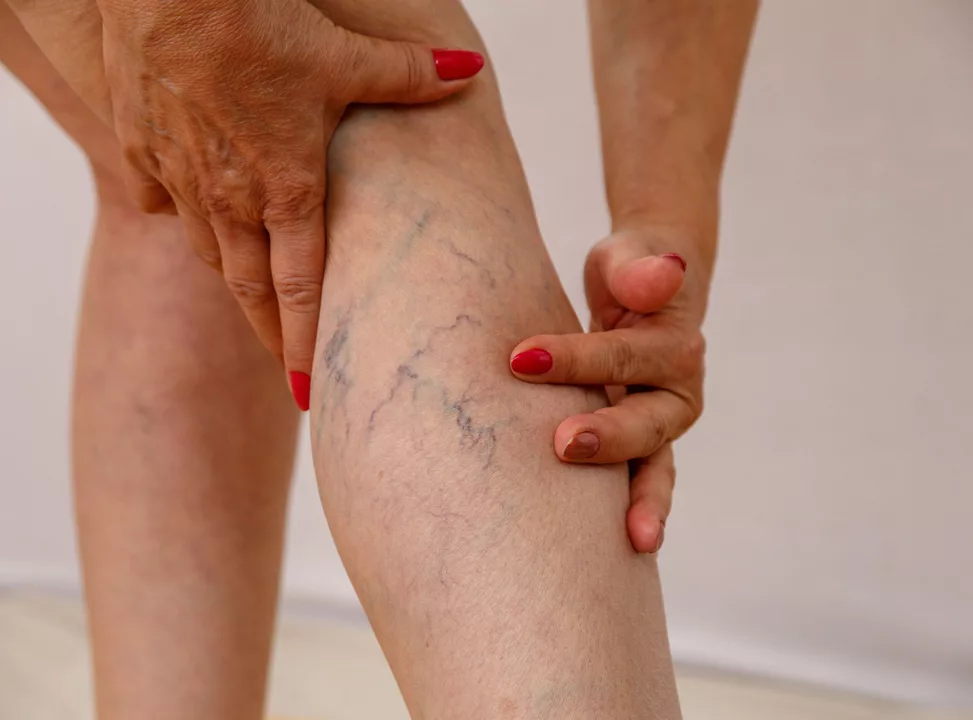Blood Clots and Varicose Veins: Is There a Connection?

May, 16 2023
Understanding Blood Clots and Varicose Veins
Before diving into the connection between blood clots and varicose veins, it's essential to understand what they are and how they develop. Blood clots are clumps of blood that have changed from a liquid to a gel-like or semi-solid state. They can form in the arteries or veins, potentially causing serious health issues if not treated promptly. On the other hand, varicose veins are enlarged, twisted veins that typically affect the legs and feet.
Varicose veins occur when the valves in your veins become weak or damaged, allowing blood to pool and causing the veins to enlarge. While varicose veins are often seen as a cosmetic issue, they can also cause pain, discomfort, and, in some cases, more serious complications. Now that we have a clear understanding of blood clots and varicose veins, let's explore their connection.
Are Blood Clots and Varicose Veins Related?
The short answer is yes, there is a connection between blood clots and varicose veins. People with varicose veins have a higher risk of developing blood clots, specifically a type of clot called deep vein thrombosis (DVT). DVT occurs when a blood clot forms in one of the deep veins in your body, usually in the legs. This can be life-threatening if the clot dislodges and travels to the lungs, causing a pulmonary embolism.
While not everyone with varicose veins will develop a blood clot, the risk is significantly higher for those with this condition. This is due to the pooling of blood in the veins, which can cause blood cells to stick together, forming a clot. Additionally, the sluggish blood flow and inflammation associated with varicose veins can contribute to clot formation.
Recognizing the Symptoms of Blood Clots
Knowing the symptoms of blood clots is crucial, as early detection and treatment can prevent severe complications. Some common symptoms of DVT include:
- Swelling in the affected leg (usually on one side)
- Pain or tenderness in the leg, often starting in the calf
- Warmth over the area of the clot
- Red or discolored skin
If you suspect you have a blood clot, it's essential to seek medical attention immediately. Your healthcare provider will be able to determine if you have a clot and recommend appropriate treatment options.
Preventing Blood Clots in People with Varicose Veins
While having varicose veins increases your risk of developing a blood clot, there are steps you can take to lower that risk. Some preventative measures include:
- Exercising regularly to improve circulation
- Wearing compression stockings to help with blood flow
- Elevating your legs when sitting or lying down
- Maintaining a healthy weight
- Not sitting or standing for long periods
By incorporating these habits into your daily routine, you can help reduce your risk of developing blood clots related to varicose veins.
How Are Blood Clots Treated?
If you develop a blood clot, your healthcare provider will recommend appropriate treatment based on your specific situation. Treatment options for DVT may include:
- Anticoagulant medications, also known as blood thinners, to help prevent the clot from getting larger
- Thrombolytic therapy, which uses medication to break up the clot
- Compression stockings to help with swelling and discomfort
- In severe cases, surgery may be necessary to remove the clot
It's essential to follow your healthcare provider's instructions and take any prescribed medications as directed to ensure the best possible outcome.
Can Treating Varicose Veins Reduce the Risk of Blood Clots?
Treating varicose veins can help improve blood flow, which may reduce the risk of developing blood clots. There are several treatment options for varicose veins, including:
- Compression therapy
- Sclerotherapy, which involves injecting a solution into the vein to cause it to collapse and fade
- Endovenous laser treatment or radiofrequency ablation, which use heat to close off the affected vein
- Surgery, such as vein stripping or phlebectomy, to remove the damaged vein
Discussing your treatment options with your healthcare provider will help you determine the best course of action for your specific situation.
Conclusion
In summary, there is a connection between blood clots and varicose veins, as individuals with varicose veins have an increased risk of developing blood clots. Recognizing the symptoms of blood clots and taking preventative measures can help reduce your risk. If you suspect you have a blood clot, seek medical attention immediately. Treating varicose veins may also help lower your risk of developing blood clots in the future.
